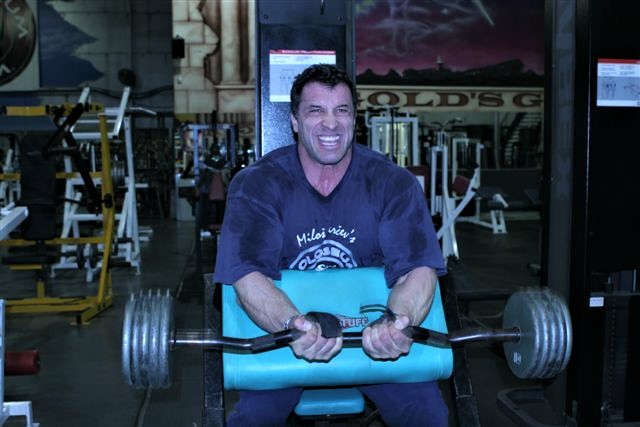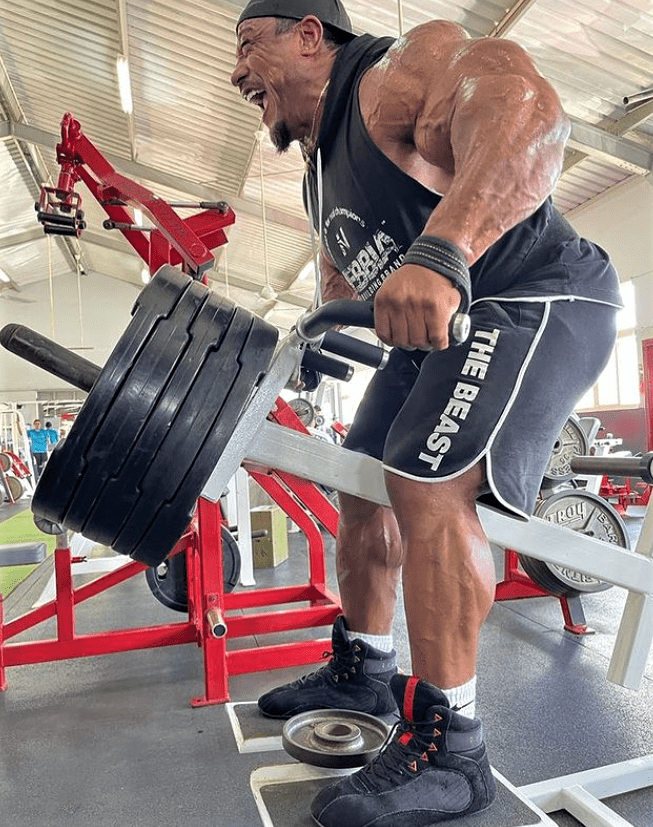Unsplash: John Arano
Think of a giant set like this. You’ve got dough, tomato sauce, mozzarella cheese, and pepperoni. The prospect of eating each individually, cold and uncooked, is not very appetizing. But stack them together, apply heat, and you can bake the perfect cheat meal—pizza. This is the logic of giant sets, which combine exercises into what is, in effect, one extended set. The sum is greater than the parts. “Going giant” has long been a way of upping workout intensity, but for some bodybuilders it’s more. It’s a training philosophy. For extended periods, you can cook up consistent gains by making giant sets the main dish of your routines. Let’s look at giant set training.
WHAT IS A GIANT SET?
First, let’s define some terms.
A superset consists of a set of two exercises paired together, performed without rest.
A giant set is the same thing but with three exercises or more exercises. A tri-set is a giant set with three exercises.
Those lifts can be for the same body part (such as quadriceps) or neighboring body parts (quads, hams, glutes). Generally, the more exercises you do, the more diverse they should be. A lower body giant set might consist of leg extensions, front squats, leg presses, leg curls, and lunges, thus combining isolation exercises (leg extensions, leg curls) with compound exercises (front squats, leg presses, lunges), all while hitting quads, hams, and glutes in the same sequence.

WHY DO GIANT SETS?
You don’t see many people doing giant sets in the gym. Done correctly with no pause between subsets, they’re exhausting and painful. And, when not done correctly, it’s difficult to keep your intensity up throughout an array of different lifts. What’s more, it can be a logistical nightmare to jump from station to station without rest in a crowded gym. While you’re doing squats, someone might jump on the leg press you wanted to use next and someone else might hog the only leg curl machine you wanted to use after leg presses. If done at all, most trainers use giant sets as an occasional means of turning up the heat.
But enough whining. Some professional bodybuilders, most notably Milos Sarcev, constructed routines made up of only giant sets. Sarcev postulated that such exercise medleys were the most effective vehicles to drive glycogen and protein to muscles. Yes, they’re painful, but in a good way. Hard work works. When I was with FLEX magazine, I followed three pro bodybuilders trained by Sarcev as they plowed through a pre-contest barrage consisting of a six-exercise chest giant set (three times), a seven-exercise back giant set (three times), and an eight-exercise shoulder giant set (twice). Number of sets: 55. Number of dashes to the locker room to puke: 2.

Giant sets are similar to circuit training. The difference is circuits typically work the entire body, or at least most of it, and are often focused on a cardio effect. As with circuit training, we don’t recommend “going giant” as a long-term strategy. But as an occasional means of cranking up intensity or for periods of 3-6 weeks, giant sets can shock you into greater gains.
GIANT SET BASICS
• Do giant sets occasionally to up intensity or for extended periods of 3-6 weeks to boost growth.
• Spend as little time as possible between exercises. Go from one to the next without rest.
• Rest for 2-4 minutes between giant sets.
• To determine how much work to do, count each set of a giant set individually. So, our sample back workout has five sets (one per exercise). Run through this giant set three or four times for 15 or 20 total sets.
• To maintain your focus and intensity for the 40+ reps of a giant set, push each exercise to failure. In this way, you’ll fail every 10 or so reps.
GIANT SET TRAINING TIPS
• Unless you have access to a sparsely-populated gym, line up your equipment ahead of time, minimizing the distance from one exercise to the next.
• Rotating through the exercises with at least one training partner will also help you keep dibs on equipment.
• Abs are an excellent giant set target. Even if you do only straight sets for every other body part, you can benefit from working your ab exercises in a rotation.
• When possible, choose a wide diversity of exercises. For this reason, biceps (stressed with primarily types of curls) are not a great giant set candidate. In contrast, back (with a plethora of machine and free-weight rows and pulldowns) is an excellent giant set candidate.
• Choose bilateral (two-sided) over unilateral (one-sided) exercises in order to progress quickly from one exercise to the next instead of slowing to work one side and then the other before progressing.

GIANT SET BACK WORKOUT
Perform each of the five exercises in this order without resting. Rest 2-4 minutes between giant sets. Do 3-4 giant sets.
Pullup — 6-12 reps
Seated Cable Row — 10-12 reps
Front Pulldown — 10-12 reps
Inverted Row — 10-15 reps
Straight-arm Pulldown — 10-15 reps
















































